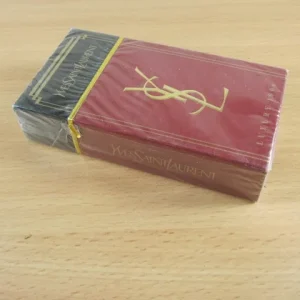The Rise and Decline of the Egyptian Cigarette Industry

Photo by WikimediaImages on Pixabay
Keywords: Egyptian cigarette industry, global fashion, cultural influence, state tobacco monopoly, Greek industrialists, counterfeits, nationalization, Turkish tobacco
In the late 19th century, Egypt experienced an unexpected boom in its cigarette industry, becoming a major exporter and a trendsetter in global fashion. This was a rare phenomenon at a time when cultural influence predominantly flowed from the center to the periphery. The Egyptian cigarette industry also stood out as one of the earliest producers of globally traded finished goods outside of the Western world. In this article, we will explore the rise and subsequent decline of the Egyptian cigarette industry, its impact on global markets, and the cultural significance it held during its heyday.
The Unexpected Rise of the Egyptian Cigarette Industry
Egypt, known for its exports of raw materials and imports of manufactured goods, was an unlikely candidate for a thriving cigarette industry. Moreover, the quality of Egyptian-grown tobacco had always been poor, and the cultivation of tobacco was banned in 1890 to facilitate tax collection. However, the imposition of a state tobacco monopoly in the Ottoman Empire created a unique opportunity for Egypt. Many Ottoman tobacco merchants, mainly ethnic Greeks, migrated to Egypt due to its cultural similarities and its exemption from the tobacco monopoly as a result of British occupation.
Nestor Gianaclis, a Greek entrepreneur who arrived in Egypt in 1864, played a pivotal role in establishing the industry. In 1871, Gianaclis set up a factory in Cairo’s Khairy Pasha palace, and with the arrival of British troops in Egypt in 1882, Egyptian cigarettes gained popularity among British officers. The demand for Egyptian cigarettes grew rapidly, leading to their exportation to the United Kingdom and other parts of Europe. Greek industrialists like Gianaclis and Ioannis Kyriazis of Kyriazi Frères successfully produced and exported cigarettes using imported Turkish tobacco, meeting the global demand for cigarettes in the late 19th century.
The Global Influence of Egyptian Cigarettes
Egyptian cigarettes produced by Gianaclis and others became so popular in Europe and the United States that they inspired a multitude of locally produced counterfeits. One notable example is the American Camel brand, established in 1913, which incorporated Egyptian motifs such as the camel, pyramids, and palm trees on its packaging. Greek immigrants in the United States also imported or produced their own versions of Egyptian cigarettes. For instance, S. Anargyros imported Egyptian Deities and later manufactured Murad, Helmar, and Mogul, while the Stephano Brothers produced Ramses II cigarettes.
To illustrate the magnitude of the Egyptian cigarette industry, let’s take a look at the cigarette production of major manufacturers in Cairo from 1897 to 1901:
| Company | 1897 | 1899 | 1901 |
|---|---|---|---|
| Kyriazi Frères | 76,386 kg | 120,987 kg | 140,654 kg |
| Nestor Gianaclis | 37,178 kg | 55,203 kg | 70,680 kg |
| Dimitrino et Co. | 24,569 kg | 27,916 kg | 30,980 kg |
| Th. Vafiadis et Co. | 21,568 kg | 23,861 kg | 32,067 kg |
| M. Melachrino et Co. | 17,920 kg | 20,782 kg | 60,237 kg |
| Nicolas Soussa Frères | —- | 29,260 kg | 70,982 kg |
| Others | 47,952 kg | 59,224 kg | 70,982 kg |
| Totals | 225,573 kg | 307,973 kg | 434,860 kg |
The Decline of the Egyptian Cigarette Industry
Tastes in Europe and the United States started shifting away from Turkish tobacco and Egyptian cigarettes during and after World War I. Virginia tobacco gained popularity, leading to a decline in the demand for Egyptian cigarettes. The Greek-run tobacco industry in Egypt suffered further setbacks when it was nationalized after the Egyptian coup d’état of 1952. Egyptian-made cigarettes were no longer exported and were known for their poor quality and low price.
However, cigarettes containing Turkish tobacco, including those grown in what is now Greece, continued to be manufactured and sold as “Turkish cigarettes” in the US, the UK, and Germany. Turkish tobacco remained a key ingredient in American blend cigarettes, which were introduced with the famous brand Camel in 1913. Today, Turkish tobacco is still used in the production of American blend cigarettes, alongside Virginia and Burley tobacco varieties.
Cultural Significance
The popularity of Egyptian cigarettes in Europe and the United States had a significant cultural impact. In Arthur Conan Doyle’s 1904 story “The Adventure of the Golden Pince-Nez,” the character interviewed by Sherlock Holmes is described as a heavy consumer of Egyptian cigarettes. Egyptian cigarette advertisements were also parodied in Hergé’s graphic novel “Cigars of the Pharaoh,” where characters in ancient Egyptian attire smoke opium-laced cigars. Additionally, Egyptian cigarette brands like Kyriazi Frères and M. Melachrino et Co. made appearances in popular culture, such as the 2017 movie “Blade Runner 2049” and the TV show “Little House on the Prairie.”
Conclusion
The rise and decline of the Egyptian cigarette industry is a fascinating tale of unexpected success and subsequent challenges. Despite the poor quality of Egyptian-grown tobacco, Greek entrepreneurs like Nestor Gianaclis and Ioannis Kyriazis managed to create a thriving industry by utilizing imported Turkish tobacco and capitalizing on the global demand for cigarettes. However, changing tastes and the nationalization of the industry ultimately led to its decline. Nevertheless, the cultural influence of Egyptian cigarettes and their impact on fashion and popular culture during their heyday cannot be understated. The Egyptian cigarette industry remains a testament to the power of innovation and cultural exchange in shaping global markets.

 Boxing Day Cuban Cracker - 3 Cigars
Boxing Day Cuban Cracker - 3 Cigars  True 100s Soft box of 10 packs
True 100s Soft box of 10 packs  Yves Saint Laurent Luxury 100's c.1960/72 Box of 10 packs
Yves Saint Laurent Luxury 100's c.1960/72 Box of 10 packs  Raz LTX 25K (DC25000) Vape - 10 Pack
Raz LTX 25K (DC25000) Vape - 10 Pack